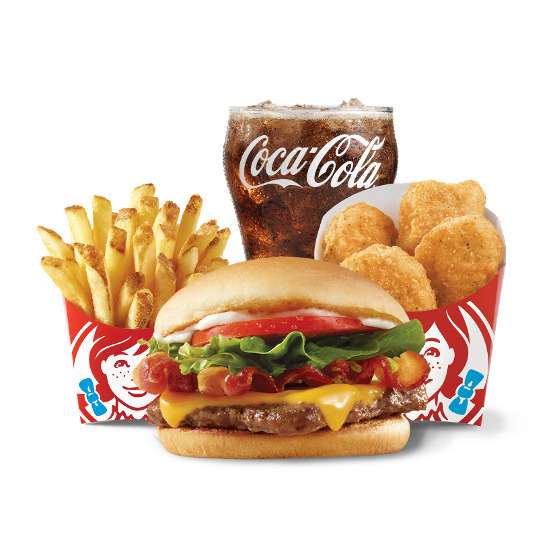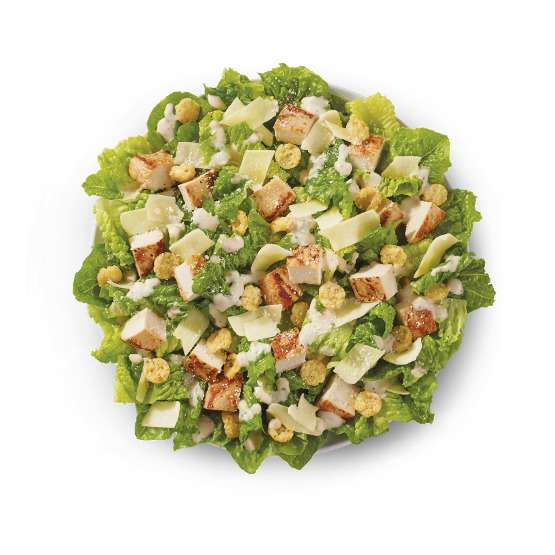
Navigating restaurant menus with food allergies can be challenging, but Wendy’s allergen menu offers a valuable resource for those with dietary restrictions. In 2025, approximately 32 million Americans live with food allergies, making restaurant transparency more crucial than ever. Wendy’s has responded to this need by providing detailed allergen information that helps customers make informed choices about their meals. For a broader look at all menu offerings, prices, and ingredient details, see the latest Wendys menu.
The Wendy’s allergen menu is designed to identify menu items containing the nine major food allergens recognized by the FDA. Whether you’re dealing with a milk allergy, gluten sensitivity, or peanut concerns, this comprehensive guide will help you navigate Wendy’s offerings safely and confidently. We’ve created this resource for individuals with allergies, parents of children with dietary restrictions, and caregivers who need reliable information to make safe dining choices.
This guide explores how to access and interpret Wendy’s allergen information, understand cross-contact concerns, and identify allergen-friendly options across the menu. We’ll also provide practical tips for customizing orders and ensuring the safest possible dining experience.
The 9 Major Food Allergens at Wendy’s (2025)
Wendy’s allergen menu tracks and identifies nine major food allergens across their entire product line. These allergens align with the Food Allergen Labeling and Consumer Protection Act (FALCPA) guidelines and the more recent Food Allergy Safety, Treatment, Education, and Research (FASTER) Act, which added sesame as the ninth major allergen in the United States.
The nine major allergens tracked by Wendy’s include:
- Milk – Found in cheeses, Frosty desserts, and many sauce formulations
- Eggs – Present in mayonnaise, some salad dressings, and certain breakfast items
- Fish – Generally not present in most Wendy’s menu items
- Shellfish – Not typically found in Wendy’s menu offerings
- Tree Nuts – May be present in some salads and seasonal items
- Peanuts – Not a common ingredient but tracked for cross-contact potential
- Wheat – Present in buns, breaded chicken, and many side items
- Soy – Found in many sauces, dressings, and oil-based products
- Sesame – Present on certain buns and potentially in some sauce formulations
For Wendy’s locations in Canada and other international markets, additional allergens may be tracked according to local regulations. The prevalence of these allergens varies across the menu, with milk, wheat, and soy being the most commonly found throughout Wendy’s offerings.
Understanding these allergens and their presence in specific menu items is essential for making safe dining choices. For example, Wendy’s Ranch dressing contains milk, eggs, and soy, while their hamburger patties typically contain none of the major allergens but may be subject to cross-contact concerns.

Accessing Wendy’s Allergen Information in 2025
Wendy’s provides multiple channels for accessing their allergen menu and nutrition info, making it convenient for customers to research before visiting. In 2025, these resources have become even more comprehensive and user-friendly.
Wendy’s Website Allergen Information
The official Wendy’s website features a dedicated nutrition and allergen section accessible from the main menu. To access this information:
- Visit the official Wendy’s website at wendys.com
- Click on the “Nutrition & Allergens” link in the footer or main menu
- Select “Allergen Information” from the dropdown menu
- Use the interactive allergen filter to sort menu items based on specific allergies
- Review the complete allergen chart for comprehensive information
The website offers a responsive design that works well on both desktop and mobile devices, allowing you to research allergen information wherever you are.
Wendy’s Mobile App Allergen Tools
The Wendy’s mobile app has enhanced its allergen features for 2025, making on-the-go research simpler:
- Download the Wendy’s app from the Apple App Store or Google Play Store
- Create an account or log in as a guest
- Tap on the “Menu” section
- Select the “Nutrition & Allergens” option
- Use the allergen filter to customize your view based on dietary needs
The mobile app allows you to save preferred allergen settings for future orders, streamlining the process for regular customers.
Downloadable Allergen Chart
For those who prefer offline access, Wendy’s provides a downloadable PDF allergen chart:
- Visit the allergen section of Wendy’s website
- Look for the “Download PDF” option
- Save the document to your device for reference even without internet access
This PDF is typically updated quarterly, with the most recent version clearly displaying its effective date. Always check for the latest version, as menu items and ingredients may change.
In-Restaurant Information
All Wendy’s locations maintain printed copies of their allergen menu and wendy’s nutrition facts. To access this information while dining in:
- Ask any team member for the allergen information
- Request to speak with a manager for more detailed questions
- Look for posted QR codes that link directly to digital allergen resources
Remember that the most up-to-date information is typically found online, as printed materials may not reflect recent menu changes or limited-time offerings.
Understanding Wendy’s Allergen Chart: Complete Breakdown
The Wendy’s allergen chart is a comprehensive tool, but interpreting it correctly is essential for those with food allergies. The chart uses a systematic approach to identify which menu items contain specific allergens.
The chart is organized with menu items listed vertically on the left side, grouped by categories such as sandwiches, salads, sides, and beverages. The nine major allergens are displayed horizontally across the top. At each intersection, the chart indicates whether an allergen is present.
Wendy’s uses the following notation system in their allergen chart:
- “X” indicates the allergen is present in the menu item
- “✓” (when available) indicates the item is free from that specific allergen
- “CC” indicates potential cross-contact with the allergen
- Blank spaces typically mean the allergen is not present, but always verify
For example, if you’re reviewing the allergen status of a Dave’s Single hamburger, you might see an “X” under milk (for the cheese) and wheat (for the bun), but no markings under the other allergens.
Some items may include notes with additional context, such as “contains milk when prepared as listed” for items where allergens can be removed through customization. The chart also typically includes a section explaining how to interpret these symbols and notations.
When using the chart, pay special attention to items marked with “CC” for cross-contact, as these pose potential risks for those with severe allergies. Cross-contact indications are based on Wendy’s standard preparation methods and kitchen practices.
For the most accurate assessment, always review the entire row for an item, as some allergens may be present in unexpected components. For instance, the natural-cut fries contain no allergens in their basic ingredients but are cooked in oil that may also be used for wheat-containing products. You can find a full exploration of Wendy’s fries, their preparation process, and allergen details in our Wendy fries guide.

Cross-Contact Concerns at Wendy’s: What You Need to Know
Cross-contact is a critical consideration when dining at any restaurant, including Wendy’s. Unlike cross-contamination (which refers to the transfer of pathogens), cross-contact occurs when an allergen from one food is unintentionally transferred to another food that doesn’t contain that allergen. For individuals with severe allergies, even minute amounts transferred through cross-contact can trigger reactions.
Wendy’s Kitchen Practices and Cross-Contact Points
Wendy’s operates busy kitchens where multiple menu items are prepared in close proximity. Several potential cross-contact points exist:
- Shared fryers: Wendy’s typically uses the same fryers for multiple products. For example, the same oil may be used for frying chicken nuggets (containing wheat) and french fries (which don’t contain allergens in their ingredients).
- Preparation surfaces: While staff are trained to clean surfaces between orders, the fast-paced environment means surfaces where bread, cheese, or other allergen-containing products are handled may come into contact with other foods.
- Utensils and tools: Tongs, spatulas, and other kitchen tools may be used across multiple food items, creating potential cross-contact.
- Condiment dispensers: Shared mayo, ketchup, and other condiment dispensers can transfer small amounts of allergens between orders.
Wendy’s Official Disclaimers
Wendy’s makes several important disclaimers regarding allergens and cross-contact:
“Wendy’s cannot guarantee that any product is free from allergens (including dairy, eggs, soy, tree nuts, wheat, and others) as we use shared equipment to store, prepare, and serve them.”
“Wendy’s makes no warranty, guarantee, or representation of any kind, express or implied, as to the absence of allergens in its food products.”
These statements reflect the reality that, despite best practices, Wendy’s cannot eliminate all cross-contact risks in its standard restaurant operations.
Risk Assessment
For those with mild to moderate allergies, the allergen chart provides good guidance on which menu items to avoid. However, individuals with severe or anaphylactic allergies should exercise extreme caution when dining at Wendy’s or any fast-food restaurant. The risk of cross-contact is significant enough that those with the most severe allergies may need to consider whether dining at Wendy’s is appropriate for their safety level.

Allergen-Friendly Menu Options at Wendy’s (2025)
Gluten-Free Options at Wendy’s
Finding gluten-free options at fast food restaurants can be challenging, but Wendy’s offers several menu items made without gluten ingredients. It’s important to note that while these items don’t contain gluten in their ingredients, they are prepared in shared kitchen spaces where cross-contact is possible.
Gluten-Free Menu Items:
- Plain hamburger patties (without the bun): Wendy’s beef patties are made from 100% fresh beef and contain no gluten ingredients. Order any burger as a lettuce wrap or in a container without the bun.
- Baked potatoes: All of Wendy’s baked potato bases are made without gluten ingredients. Choose the plain potato for the safest option, or add toppings like cheese or sour cream (which are also made without gluten).
- Chili: Wendy’s famous chili is made without gluten ingredients, making it a hearty option for those avoiding gluten.
- Frosty desserts: Both chocolate and vanilla Frosty treats are made without gluten ingredients, though they do contain dairy. For more details about flavors and ingredients, explore our Wendy Frosty flavors guide.
- Garden salads: Order without croutons or breaded chicken for a gluten-free base. The Southwest Avocado Chicken Salad (with grilled chicken) can be a good option without the croutons. For a deeper breakdown of salad options and customizations, see the Fresh-Made Salads guide.
- Grilled chicken breast: The grilled chicken itself contains no gluten ingredients and can be ordered without the bun. For specifics on the grilled chicken sandwich, its ingredients, and customization, visit our grilled chicken sandwich guide.
For those with celiac disease, it’s crucial to note that Wendy’s does not have dedicated gluten-free preparation areas. Cross-contact with gluten-containing items is possible during preparation, particularly with the fryers. Items like French fries, while not containing gluten ingredients, are prepared in oil that may be used for breaded products.
When ordering, always specify your gluten allergy to the staff so they can take additional precautions when preparing your food. The manager can provide the most current ingredients information for limited-time or regional items.

Dairy-Free Options at Wendy’s
For those with milk allergies or lactose intolerance, Wendy’s offers several dairy-free options. Remember that Wendy’s nutrition info indicates that cross-contact is still possible in their kitchens.
Dairy-Free Menu Items:
- Plain hamburger patties: Wendy’s beef patties contain no dairy. Order without cheese and mayo to keep it dairy-free.
- Applewood Smoked Bacon: This contains no dairy and can be added to customize various menu items.
- Plain baked potato: The basic baked potato has no dairy ingredients. Avoid the cheese, sour cream, and butter toppings.
- Plain oven-baked French fries: Wendy’s natural-cut fries contain no dairy in their ingredients, though cross-contact is possible.
- Garden side salad: Order without cheese for a dairy-free option. Use oil-based dressings like the Pomegranate Vinaigrette.
- Apple bites: These fresh fruit slices are naturally dairy-free.
- Most soft drinks and iced tea: These beverage options contain no dairy and are detailed in the Wendys drinks menu.
When customizing orders to be dairy-free, be sure to specify removal of obvious dairy products like cheese, as well as less obvious sources like mayo (which contains eggs but not dairy) and specific sauces that may contain dairy derivatives.
The digital ordering platforms (website and app) allow you to easily customize your order by removing dairy-containing ingredients, making it more convenient to create dairy-free meals at Wendy’s.

Nut-Free Options at Wendy’s
Good news for those with tree nut and peanut allergies: most of Wendy’s core menu is made without nuts. Unlike some fast food chains, Wendy’s does not use peanut oil for cooking. However, always verify current information as seasonal or limited-time offers may introduce nut ingredients.
Nut-Free Considerations:
- Core menu items: Most hamburgers, chicken sandwiches, nuggets, fries, and Frosty desserts are made without tree nuts or peanuts.
- Salad caution: Some salads may contain nuts, particularly seasonal offerings. The Apple Pecan Salad, for example, contains roasted pecans. Always check current salad ingredients.
- Baked potatoes: All varieties are typically prepared without nut ingredients.
- Limited-time items: Seasonal items, particularly desserts or specialty salads, may sometimes contain nuts. Always check current allergen information.
While most of Wendy’s menu is made without nut ingredients, the company does not claim to be entirely nut-free due to supply chain considerations and the potential for ingredients to change. Those with severe nut allergies should always confirm current allergen information before ordering.
Soy-Free Options at Wendy’s
Finding soy-free options can be challenging, as soy is prevalent in many fast food ingredients, particularly in oils, sauces, and bread products.
Soy-Free Considerations:
- Beef patties: Wendy’s hamburger patties are made without soy ingredients.
- Applewood Smoked Bacon: This contains no soy ingredients.
- Plain baked potato: The basic potato is naturally soy-free.
- Apple bites: These fresh fruit slices contain no soy.
- Some beverages: Most soft drinks, iced tea, and coffee are soy-free, and you can see choices in our Wendys drinks menu.
Major sources of soy at Wendy’s include the hamburger buns, many sauces, salad dressings, and the oil used for frying. Even the grilled chicken contains soy ingredients in its marinade. For those with soy allergies, options are more limited and typically require significant customization.
When ordering soy-free items, request that staff change gloves and take precautions to avoid cross-contact with soy-containing products. The most reliable soy-free options are typically the simplest items with minimal ingredients.

Other Allergen-Friendly Options (Egg-Free, Fish/Shellfish-Free, Sesame-Free)
Egg-Free Options:Many Wendy’s items are naturally egg-free, but some key sources of eggs include:
- Mayonnaise-based sauces and dressings
- Ranch, Caesar, and several other salad dressings
- Breakfast items containing eggs
Egg-free options include plain hamburgers (specify no mayo), plain baked potatoes, fries, plain grilled chicken, and most beverages. When ordering, always specify “no mayo” for sandwiches as this is a primary source of eggs on the menu. For full details on available breakfast offerings that may require extra allergen consideration, check our Wendy’s breakfast menu.
Fish and Shellfish:Good news for those with fish or shellfish allergies – Wendy’s standard menu generally does not include fish or shellfish ingredients. This makes most of the menu safe for those with these specific allergies, though always verify limited-time offerings, which occasionally might include fish options. During limited-time promotions, see our Wendy’s fish burger guide for details on the Crispy Panko Fish Sandwich, including its allergens and preparation.
Sesame Considerations:With sesame recently added as a major allergen, it’s important to note its presence in:
- Most hamburger buns and sandwich breads (contain sesame seeds)
- Some sauces and dressings may contain sesame oil or tahini
For sesame allergies, order burgers without buns or request lettuce wraps. Plain potatoes, apple bites, and most beverages are typically sesame-free.
Customizing Your Wendy’s Order for Allergen Safety
Effective communication and customization are key strategies for dining safely with food allergies at Wendy’s. The chain offers several ways to modify standard menu items to accommodate allergen concerns.
Communicating Allergies to Wendy’s Staff
When ordering with food allergies, clear communication is essential:
- Identify yourself as having an allergy: Begin your order by stating, “I have a [specific] food allergy,” so staff understand the seriousness of your request.
- Speak with a manager: For severe allergies, ask to speak directly with a manager who typically has more comprehensive training on allergen protocols.
- Be specific about cross-contact: If you’re highly sensitive, request that staff change gloves and use clean preparation surfaces.
- Verify your order: When receiving your food, double-check that modifications were made correctly before eating.
Digital vs. In-Person Ordering Modifications
Wendy’s offers multiple ordering channels, each with advantages for allergen customization:
Digital Ordering (App/Website):
- Allows you to carefully review all ingredients and allergen information before ordering
- Provides clear customization options for removing ingredients
- Creates a written record of your modifications, reducing miscommunication
- Permits saving of allergen preferences for future orders
Example: Using the app, you can select a Dave’s Single, tap “Customize,” and remove cheese, mayo, and request a lettuce wrap instead of a bun to create a dairy-free, gluten-free option.
In-Person Ordering:
- Allows real-time questions about ingredients or preparation
- Provides opportunity to emphasize the severity of your allergy
- Enables requests for special handling (clean gloves, separate preparation areas where possible)
Example: When ordering in person, you might say, “I have a severe dairy allergy. Could I please have the grilled chicken sandwich with no mayo and no cheese, and can you make sure it’s prepared with clean gloves?”
Specific Customization Options Available
Wendy’s offers several modifications to accommodate allergen needs:
- Bunless burgers: Any burger can be ordered without the bun and served in a container or lettuce wrap
- Protein swaps: Substitute grilled chicken for fried chicken on sandwiches or salads
- Dressing/sauce on the side: Request dressings and sauces separately to control ingredients
- Removal of specific allergens: Common requests include “no cheese,” “no mayo,” or “no croutons”
- Plain versions: Request items “plain” to remove most potential allergen-containing toppings and condiments
For example, a Junior Hamburger ordered plain with no bun eliminates exposure to wheat, sesame, dairy, and potentially soy and eggs depending on the standard toppings.

Best Practices for Dining at Wendy’s with Food Allergies
Successfully navigating Wendy’s menu with food allergies requires strategic planning and communication. Follow these best practices to minimize risk and maximize safety.
Timing Considerations
The time of day you visit Wendy’s can significantly impact food preparation conditions:
- Off-peak hours (2-4 PM or after 8 PM) typically mean less kitchen congestion, allowing staff more time to accommodate special requests and reduce cross-contact risks.
- Avoid rush periods (noon-1 PM and 5-7 PM) when high order volumes may lead to rushed preparation and increased cross-contact potential.
- Early in the day can be ideal for some allergens, as equipment and surfaces may be cleaner after morning setup.
- Consider weekdays rather than weekends when possible, as restaurants are generally less busy.
Verifying Current Allergen Information
Wendy’s menu and ingredients change periodically, making verification essential:
- Check the official wendy’s allergen menu online before each visit, as formulations change without notice.
- Verify limited-time offerings separately, as these items may not appear on standard allergen charts.
- Call the specific location ahead of your visit to confirm their current ingredients and preparation methods.
- Review nutrition info quarterly as Wendy’s typically updates their allergen information on a quarterly basis.
Effective Communication Strategies
Clear communication significantly improves your dining safety:
- Use specific language about your allergies rather than general terms like “food sensitivity.”
- Carry an allergen card listing your specific allergens to show staff, especially for multiple or unusual allergies.
- Confirm your order verbally at the counter and again when receiving your food.
- Check the packaging and appearance of food before consuming to verify modifications were made.
- Use phrases like “I have a severe allergy that requires…” rather than preferences or dislikes.
Emergency Preparedness
Despite precautions, always be prepared for potential reactions:
- Carry emergency medication (such as antihistamines or epinephrine auto-injectors) when dining out.
- Dine with a companion who knows about your allergies and how to respond to a reaction.
- Know the location of the nearest emergency room or urgent care facility.
- Consider wearing medical identification if you have severe allergies.
- Start with a small taste of new menu items and wait several minutes before continuing to eat.
Following these best practices can significantly reduce your risk when dining at Wendy’s with food allergies, though no approach can completely eliminate all potential for adverse reactions in a shared kitchen environment.

Downloadable Resources for Wendy’s Allergen Information
To make your dining experience at Wendy’s more convenient, we’ve compiled essential resources for quick reference. These tools can help you make informed decisions about menu options based on your specific allergen concerns.
Official Wendy’s Allergen Resources
- Wendy’s Complete Allergen Guide PDF – Direct link to Wendy’s most current allergen information document, updated quarterly with complete details on all menu items.
- Wendy’s Nutrition Calculator – Interactive tool on Wendy’s website that allows you to customize menu items and view real-time allergen and nutrition facts updates.
- Wendy’s Mobile App – Download link for the official app, which includes built-in allergen filters and customization options for mobile ordering.
Custom Allergen Quick-Reference Guides
We’ve created specialized quick-reference sheets focused on specific allergens. These printable PDFs list safe menu options and customization suggestions:
- Gluten-Free Quick Guide – One-page reference of all Wendy’s items made without gluten ingredients, with cross-contact notes.
- Dairy-Free Menu Options – Comprehensive list of dairy-free items and simple customizations to create safe meals.
- Top 9 Allergen Avoidance Chart – Color-coded chart showing which menu items are free from each of the major allergens.
Mobile-Friendly Resources
- Wendy’s Allergen QR Code – Scan this code with your smartphone for instant access to the most current allergen information from Wendy’s official sources.
- Emergency Allergen Communication Cards – Downloadable cards to show restaurant staff that clearly communicate your specific allergen concerns.
These resources are regularly updated to reflect current menu options and ingredient changes. We recommend downloading fresh copies quarterly to ensure you have the most accurate information for safe dining at Wendy’s.
Frequently Asked Questions About Wendys’ Allergens (2025)
Are Wendy’s fries gluten-free?
Wendy’s natural-cut French fries do not contain gluten ingredients in their formulation. However, they are cooked in fryers that may also be used for wheat-containing products like chicken nuggets and breaded chicken sandwiches. Due to this shared equipment, Wendy’s cannot guarantee that their fries are completely free from gluten through cross-contact. Individuals with celiac disease or severe gluten sensitivity should exercise caution. More about fry preparation and allergens is available in our Wendy fries guide.

Does Wendy’s have a dedicated allergen-free fryer?
No, Wendy’s restaurants typically do not maintain dedicated allergen-free fryers. Their kitchen setup uses shared fryers for multiple products, including those containing wheat, soy, and other allergens. This operational approach means that even foods without allergen ingredients, such as French fries, may be exposed to allergens through the cooking oil. Wendy’s does not claim to provide allergen-isolated cooking environments in their standard operations.
Can Wendy’s guarantee a 100% allergen-free meal?
Wendy’s explicitly states that they cannot guarantee any menu item to be completely free from allergens. Their official position acknowledges that they use shared equipment for storage, preparation, and serving, which creates inherent cross-contact possibilities. While they provide detailed allergen information and can accommodate requests for ingredient omissions, they make no warranty or guarantee regarding the complete absence of any allergen in their products. Individuals with severe allergies should consider this limitation when deciding whether to dine at Wendy’s.
Are Wendy’s sauces gluten-free/dairy-free?
Wendy’s sauces vary in their allergen content:
- Gluten-free sauces include Sweet & Sour sauce, Barbecue sauce, and Ghost Pepper Ranch (though this contains dairy)
- Dairy-free sauces include Sweet & Sour sauce, Barbecue sauce, and ketchup
- Sauces containing both gluten and dairy include some specialty sauces and dressings
Most mayonnaise-based sauces at Wendy’s contain eggs but not dairy. Always check the current allergen chart for specific sauce formulations, as ingredients may change seasonally or regionally.
How often is Wendy’s allergen information updated?
Wendy’s typically updates their official allergen information quarterly, though changes to ingredients or the introduction of new menu items may prompt more frequent updates. The official allergen chart always displays its effective date. For the most current information, particularly regarding limited-time offerings, check the digital allergen resources on Wendy’s website or mobile app, which are updated more promptly than printed materials.
What ingredients are in Wendy’s Frosty desserts?
Wendy’s Frosty desserts contain milk as a primary allergen. The classic Chocolate Frosty and Vanilla Frosty both contain milk, sugar, corn syrup, and various thickeners and stabilizers. They do not contain egg ingredients but do contain small amounts of soy lecithin as an emulsifier. Frosties are gluten-free in terms of ingredients but are prepared in shared environments. Seasonal Frosty flavors may contain additional allergens, so always check current information for limited-time varieties. For a complete breakdown of Frosty types, nutrition, and allergy info, visit our Wendy Frosty flavors guide.
Does Wendy’s offer allergen-free buns?
As of 2025, Wendy’s does not offer specialized allergen-free buns (such as gluten-free buns) at most locations. Their standard sandwich buns contain wheat, soy, and sesame ingredients. For customers avoiding these allergens, Wendy’s offers lettuce wraps as an alternative to buns, or items can be ordered in a container without any bread. Some test markets may have alternative bun options, but these are not widely available across all Wendy’s locations.

Which Wendy’s salad dressings are allergen-free?
Few of Wendy’s salad dressings are completely free from all major allergens. Their Pomegranate Vinaigrette is one of the more allergen-friendly options, containing no dairy, eggs, wheat, tree nuts, or peanuts, though it does contain soy ingredients. Most creamy dressings (Ranch, Caesar, Avocado Ranch) contain milk, eggs, and sometimes wheat-derived ingredients. For the most allergen-friendly approach, consider requesting oil and vinegar as a dressing alternative, which many locations can provide upon request. See more on Fresh-Made Salads and how to customize for allergies.
Is Wendy’s chili gluten-free/dairy-free?
Wendy’s chili is made without gluten-containing ingredients and does not contain dairy in its standard recipe. However, Wendy’s notes that their chili is prepared in shared kitchen environments, creating potential for cross-contact with allergens including gluten and dairy. Some locations may add cheese as a topping unless specifically requested without it. The chili does contain soy ingredients. For the most accurate current information on Wendy’s chili, check the latest allergen chart or speak with location management.
Understanding Special Diet Options at Wendy’s Beyond Allergies
Beyond addressing specific food allergens, many Wendy’s customers follow special diets for various health, ethical, or religious reasons. Understanding these broader options can help you make informed choices that align with your dietary needs. If you’re interested in detailed nutrition facts or the full 2025 menu, explore the Wendy’s Menu 2025 guide.
Vegetarian and Vegan Options
Wendy’s menu has limited but accessible options for vegetarians and vegans:
Vegetarian options include:
- Plain baked potatoes and various potato toppings (sour cream, cheese)
- Garden side salad (order without bacon)
- French fries (cooked in vegetable oil)
- Frosty desserts
- Apple bites
Vegan options are more restricted but include:
- Plain baked potato (no toppings)
- Garden side salad with no cheese and oil-based dressing
- French fries
- Apple bites
Note that while Wendy’s does not currently offer plant-based meat alternatives nationally, some test markets may feature these options. Check with local restaurants for availability.

Low-Carb and Keto-Friendly Choices
Carb-conscious diners can find suitable options by making strategic choices and modifications:
- Bunless burgers served in a container
- Grilled chicken without the bun
- Side salads without croutons
- Toppings like bacon, cheese, and ranch dressing (check carb counts)
A popular keto-friendly order is a double cheeseburger with no bun, served in a container with extra lettuce, cheese, and mayo. Note that most dressings and sauces do contain some carbs, so request them on the side to control portions.

Religious Dietary Considerations
Wendy’s does not specifically certify their food for religious dietary requirements like Halal or Kosher. Important considerations include:
- Halal concerns: Wendy’s meat is not certified Halal. Practicing Muslims typically avoid Wendy’s meat products but might consume vegetarian items.
- Kosher considerations: Wendy’s food is not Kosher-certified. The mixing of meat and dairy (cheeseburgers) and non-Kosher meat sources means most observant Jews avoid Wendy’s entirely.
The most appropriate options for those following religious dietary restrictions are typically the vegetarian items, though even these may not meet strict requirements due to preparation methods and equipment sharing.
Intersection with Allergen Concerns
Many special diets overlap with allergen considerations:
- Gluten-free requirements often align with wheat allergy avoidance
- Dairy-free needs overlap with vegan dietary choices
- Low-FODMAP diets may require avoiding both wheat and dairy
When multiple dietary restrictions exist, the safest approach is typically to focus on the simplest menu items with the fewest ingredients. Plain baked potatoes, simple salads with oil-based dressings, and plain grilled meats without sauces often serve as the foundation for accommodating multiple dietary needs simultaneously.
Always check the Wendy’s nutrition info for the most current ingredients and preparation methods, especially when combining multiple dietary restrictions.
Resources for Further Food Allergy Support
Managing food allergies extends beyond any single restaurant visit. These resources provide reliable information, community support, and practical tools for navigating food allergies in everyday life.
National Food Allergy Organizations
- Food Allergy Research & Education (FARE) – The largest nonprofit organization dedicated to food allergy awareness, advocacy, and research. FARE offers educational materials, research updates, and emergency action plan templates.
- Food Allergy & Anaphylaxis Connection Team (FAACT) – Provides education, advocacy, and support resources for those managing food allergies, with specialized programs for various age groups.
- Asthma and Allergy Foundation of America (AAFA) – Offers comprehensive resources on food allergies and their connection to other allergic conditions.
Mobile Apps for Allergen Management
- Spokin – Allows users to search restaurant reviews from others with food allergies and provides personalized recommendations based on your specific allergen profile.
- AllergyEats – A restaurant guide that rates restaurants based on allergy-friendliness, with user reviews specific to food allergy experiences.
- Allergy Force – Helps you scan packaged foods for allergens, maintain emergency contact information, and access emergency action plans quickly.
Medical Resources
- American Academy of Allergy, Asthma & Immunology (AAAAI) – Professional medical organization providing credible information on food allergy diagnosis, treatment, and management.
- American College of Allergy, Asthma & Immunology (ACAAI) – Offers a food allergy resource center with scientifically-backed information and a tool to find allergists near you.
- National Institute of Allergy and Infectious Diseases (NIAID) – Provides the latest research and guidelines on food allergy management from the federal government.
Online Communities
- Food Allergy Lowdown – A moderated online forum where people share real experiences dining out with food allergies, including specific restaurant reviews.
- No Nuts Moms Group – A support network primarily focused on nut allergies, with local chapters organizing in-person meetups and sharing resources.
- Celiac Disease Foundation Online Community – Connects those with celiac disease and gluten sensitivities to share dining experiences and coping strategies.
These resources can help you stay informed about the latest research, connect with others facing similar challenges, and develop strategies for safely navigating restaurants and other food environments beyond just Wendy’s.

Expert Tips for Eating Out with Food Allergies in 2025
To provide the most credible guidance, we’ve consulted with food allergy experts, including registered dietitians, allergists, and food safety specialists. Their insights offer valuable perspectives for dining out safely with food allergies.
Dr. Sarah Johnson, MD – Board-Certified Allergist
“The most important strategy for dining out with food allergies is establishing clear communication with restaurant staff. Don’t hesitate to speak with managers directly, as they typically have more comprehensive training in allergen protocols than frontline staff. In 2025, with increased awareness of food allergies, most restaurants are more accommodating than ever, but the responsibility remains with the individual to communicate their needs effectively.”
Maria Rodriguez, RD – Specialized Dietitian in Food Allergies
“When reviewing restaurant menus, look for the simplest preparations with the fewest ingredients. At a place like Wendy’s, this might mean ordering a plain burger patty, a baked potato without toppings, or fresh fruit. Each additional ingredient increases the risk of allergen exposure. I advise my clients to use the ‘Build Your Own’ approach whenever possible, starting with safe base ingredients rather than trying to deconstruct complex menu items.”
Thomas Wu – Food Allergy Safety Trainer
“One overlooked aspect of dining out safely is timing. Visiting during off-peak hours significantly improves your chances of receiving careful attention to your allergen concerns. Restaurant kitchens are less hectic, staff have more time to accommodate special requests, and the risk of cross-contact decreases substantially. If possible, aim for mid-afternoon or later evening visits rather than traditional lunch or dinner rush periods.”
Emergency Preparedness Insight from Dr. Emily Brooks – Emergency Medicine Physician
“Always carry your emergency medications, including antihistamines and epinephrine auto-injectors if prescribed. Before eating, inform your dining companions about your allergies and what to do in case of a reaction. With severe allergies, consider using a medical ID bracelet or app that emergency responders can access. Remember that epinephrine should be administered promptly for severe reactions, followed immediately by calling emergency services, even if symptoms appear to improve.”
Advocacy Perspective from James Miller – Food Allergy Policy Advocate
“Your feedback matters more than you might think. When restaurants handle your allergen requests well, let them know – positive reinforcement encourages continued good practices. Equally, if you encounter problems, provide constructive feedback to management. Each interaction helps raise awareness and improves policies for all food-allergic consumers. In 2025, customer feedback remains one of the strongest drivers of improved allergen practices in the restaurant industry.”
These expert perspectives emphasize that successful dining with food allergies combines preparation, communication, strategic choices, and emergency readiness. By incorporating these professional insights into your approach to eating at Wendy’s and other restaurants, you can significantly reduce risks while still enjoying dining out.
The Bottom Line on Wendy’s Allergen Safety
Navigating Wendy’s allergen menu requires understanding both the possibilities and limitations of dining at a fast-food restaurant with food allergies. Wendy’s provides detailed allergen information and offers several customization options, but operates kitchens where cross-contact risks exist by nature of their fast-paced environment.
For those with mild to moderate food allergies, Wendy’s can accommodate many needs through their transparent allergen information and willingness to customize orders. The most reliable allergen-friendly options include plain baked potatoes, bunless burger patties, grilled chicken without buns, and garden salads with modifications. These items can serve as the foundation for meals that avoid most major allergens when ordered with appropriate customizations.
However, individuals with severe or anaphylactic allergies should approach Wendy’s with heightened caution. The shared preparation surfaces, cooking equipment, and utensils create unavoidable cross-contact possibilities that Wendy’s openly acknowledges in their allergen disclaimers. For these individuals, even the most careful ordering may not eliminate all risks.
The most important takeaway is that knowledge empowers safer choices. By thoroughly researching the wendy’s allergen menu before visiting, communicating clearly with staff, making strategic customizations, and visiting during less busy periods, you can significantly reduce your risk of allergen exposure. Always verify current information before each visit, as ingredients and preparation methods can change.
Remember that while this guide provides comprehensive information based on Wendy’s allergen policies in 2025, it cannot replace personalized medical advice. Those with food allergies should consult with healthcare providers about their specific situations and appropriate precautions when dining out.

About This Guide & References
This comprehensive guide to Wendy’s allergen menu was researched and created based on information available as of January 2025. We consulted multiple sources to ensure accuracy, including:
- Official Wendy’s allergen information and nutrition facts published on their corporate website
- Direct communication with Wendy’s customer service representatives
- Interviews with food allergy specialists and registered dietitians
- Guidelines from food allergy organizations and regulatory agencies
- Reviews of academic literature on food allergies and restaurant safety
All information was verified through multiple sources whenever possible. However, restaurant policies, ingredients, and preparation methods can change without notice. This guide is updated quarterly to reflect the most current information, with the last comprehensive update completed in January 2025.
It’s important to note that this guide is provided for informational purposes only and should not be considered a substitute for professional medical advice. Individuals with food allergies should consult with their healthcare providers regarding their specific dietary needs and restrictions.
For the most current and location-specific allergen information, always check Wendy’s official website or speak directly with restaurant management before ordering.
Key References:
- Wendy’s Official Allergen Guide (2025 Edition)
- Food Allergy Research & Education (FARE) Dining Out Guidelines
- FDA Food Allergen Labeling and Consumer Protection Act (FALCPA)
- Food Allergy Safety, Treatment, Education, and Research Act (FASTER Act)
- American Academy of Allergy, Asthma & Immunology Restaurant Guidelines
